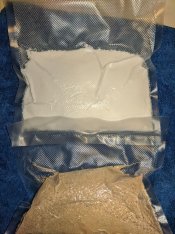Using only a couple frames for testing is valid for some things, but fails to consider overall exhaustion in highly dilute developers. The reason Kodak recommends a minimum amount of stock solution for D-76 and Xtol when used diluted is to avoid inconsistent development between rolls with little exposed halide to develop (lower overall exposure, or mostly dark scenes with small areas of highlight) and those with an exceptionally high level (exposed at lower EI for some reason, or high key scenes, perhaps). That is, your heavily exposed film will underdevelop relative to the lightly exposed one.
By using the recommended minimum of stock solution per roll (I recall that as 100 ml of Xtol, don't recall the figure for D-76), you ensure there's enough active developer for a maximally exposed film, so that film gets the same level of development in the same time/temp as one that's barely exposed at all.
Note, this is different from local exhaustion in highly diluted developers used for stand, semi-stand, or reduced agitation development -- in that case, there's still enough developer to develop all the exposed halide for a maximum exposure, but it's dilute enough that without agitation the developer in and near the emulsion will exhaust in the more exposed areas and won't where the halide has less latent image density. This is what produces the compensating effect, and a related phenomenon produces the edge effects that increase local contrast and give the illusion of increased sharpness.
Now, this is a "rule" that, like most of the other rules of photography, can be broken more or less freely, but like the others, it should be broken only intentionally, for a specific end, not out of ignorance -- the latter will leave the operator wondering why this film needs a Grade 4 filter to print well, and that one prints with a Grade 1 1/2, when they had the same (beyond recommended dilution) development offered.






